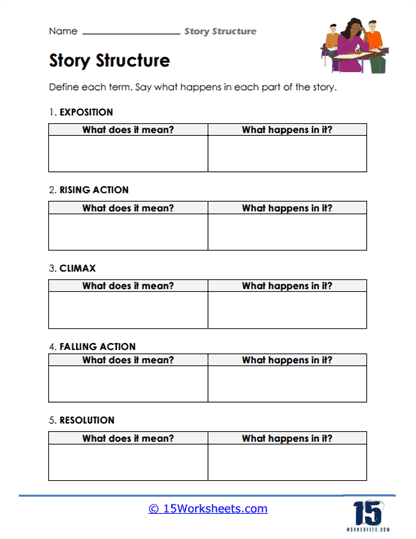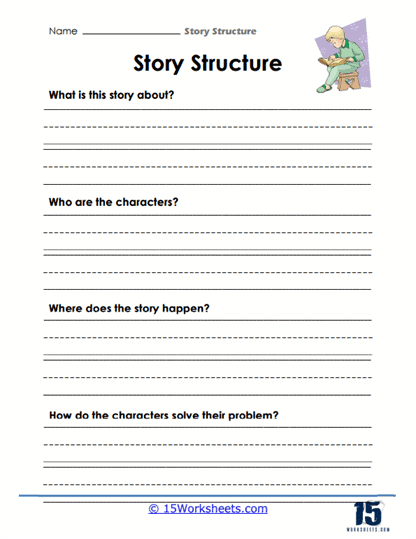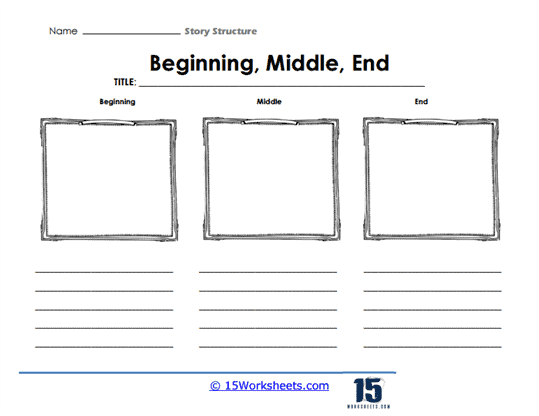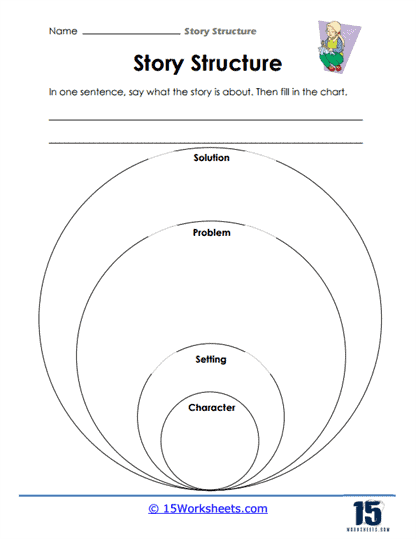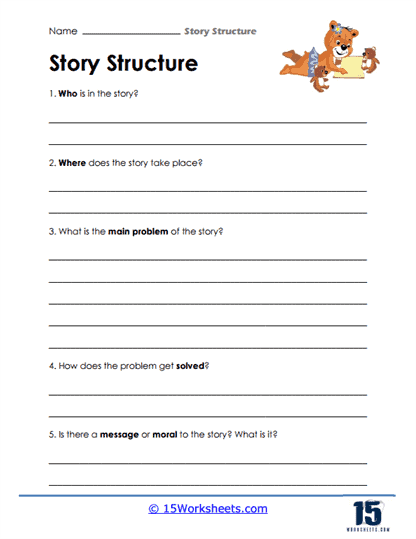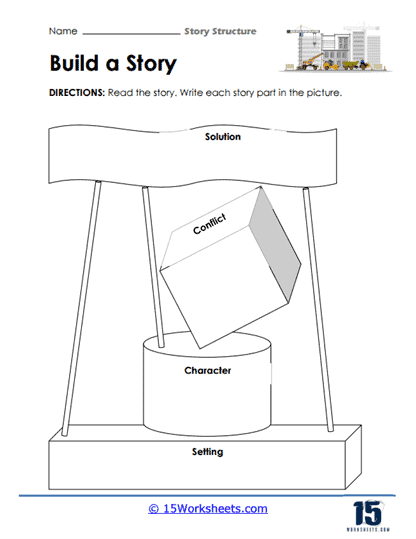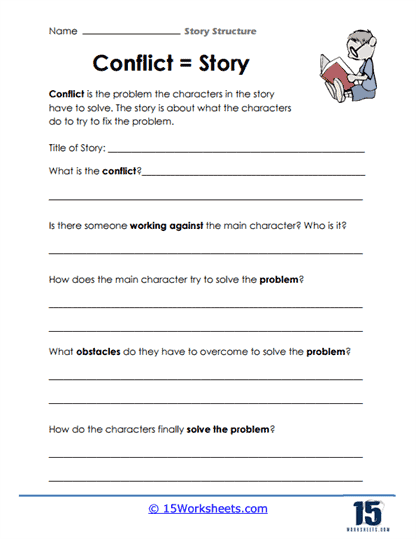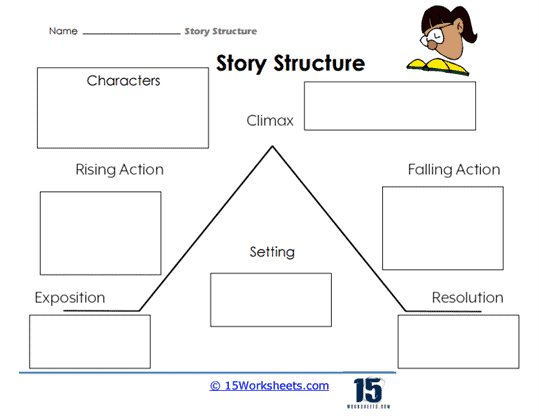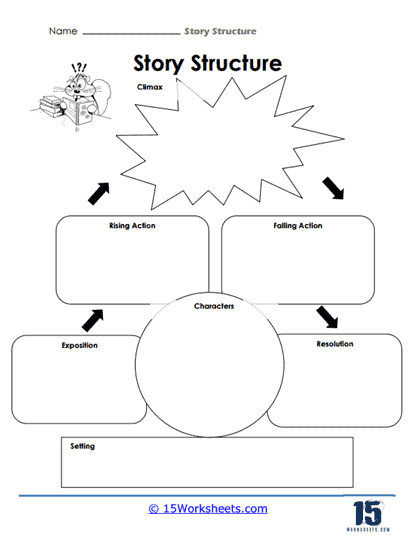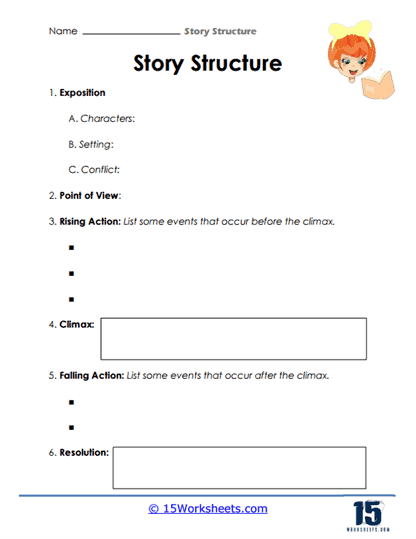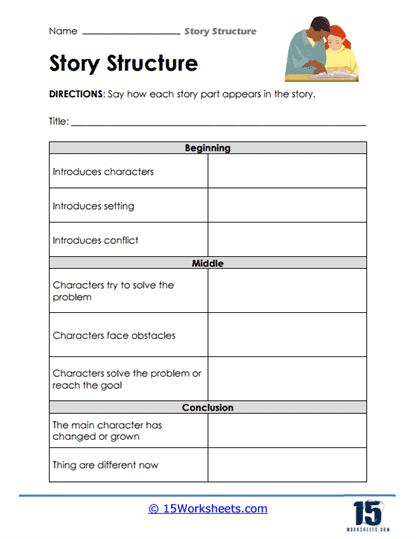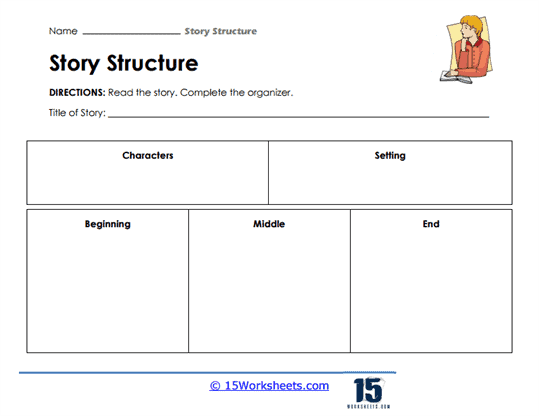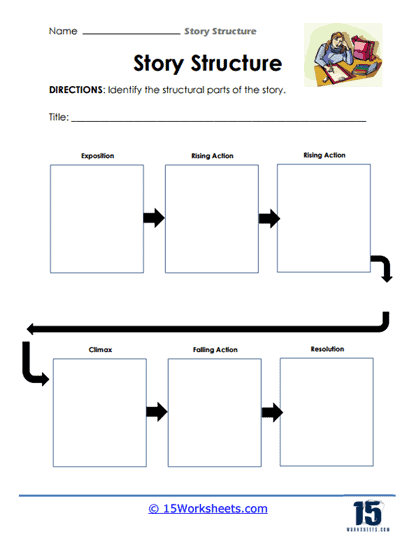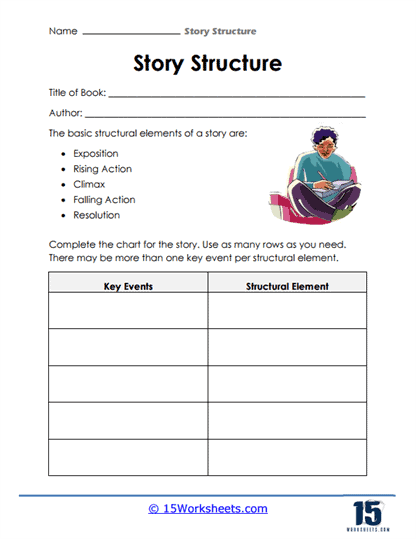Story Structure Worksheets
All About These 15 Worksheets
These worksheets are designed to help students understand the elements that make up a story, such as plot, setting, characters, and themes. These worksheets include a variety of activities that encourage critical thinking and analysis of the various elements of a story.
Some of the activities that are included in these worksheets involve:
- Identifying the elements of a story – Students are asked to identify the key elements of a story, including the setting, characters, conflict, rising action, climax, falling action, and resolution.
- Analyzing the plot – Students are encouraged to analyze the plot of a story, including the events that occur and how they are related to each other.
- Examining character development – Students are asked to consider how the characters in a story develop over time, and how their actions contribute to the plot.
- Exploring themes – Students are encouraged to explore the themes of a story, including the underlying messages or ideas that the author is trying to convey.
Overall, these worksheets can help students to develop a deeper understanding of the elements that make up a story and to appreciate the complexity and artistry of storytelling. By analyzing and exploring the various elements of a story, students can become more engaged and critical readers and develop their own skills as writers.
What makes up a story?
Story structure is the organization of a story’s elements, including the plot, characters, setting, and themes, into a cohesive narrative. Understanding the structure of a story can help readers to better understand the author’s intent and to appreciate the literary techniques used to create a compelling narrative. Here are some of the key elements of story structure:
- Plot – The plot is the series of events that make up the story. A typical plot includes an exposition (introduction of the setting and characters), rising action (development of conflict), climax (turning point of the story), falling action (resolution of the conflict), and resolution (the end of the story).
- Characters – Characters are the individuals who populate a story. They may be fictional or based on real people. They are typically defined by their actions, thoughts, and interactions with other characters.
- Setting – Setting refers to the time and place in which a story takes place. It can be as simple as a single room or as complex as an entire universe.
- Conflict – Conflict is the central problem or obstacle that drives the plot of a story. It can be internal or external and is often resolved by the end of the story.
- Character development – Character development is the process by which characters change and evolve over the course of a story. This can be due to their experiences, interactions with other characters, or other factors.
- Themes – Themes are the underlying messages or ideas that a story conveys. They can be explicit or implicit and may be related to a variety of issues, such as identity, power, love, or morality.
The elements of story structure work together to create a cohesive narrative that engages and resonates with readers. By analyzing these elements, readers can gain a deeper understanding of the author’s intent and appreciate the artistry of storytelling.

